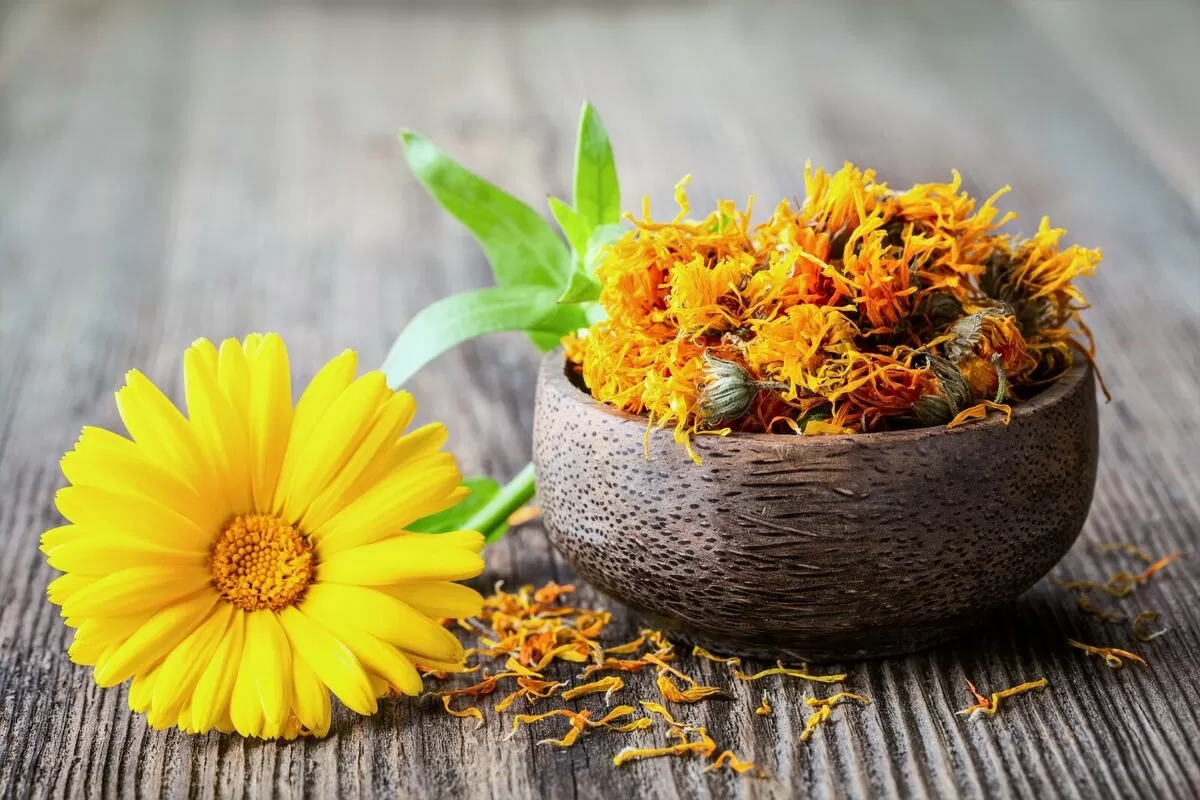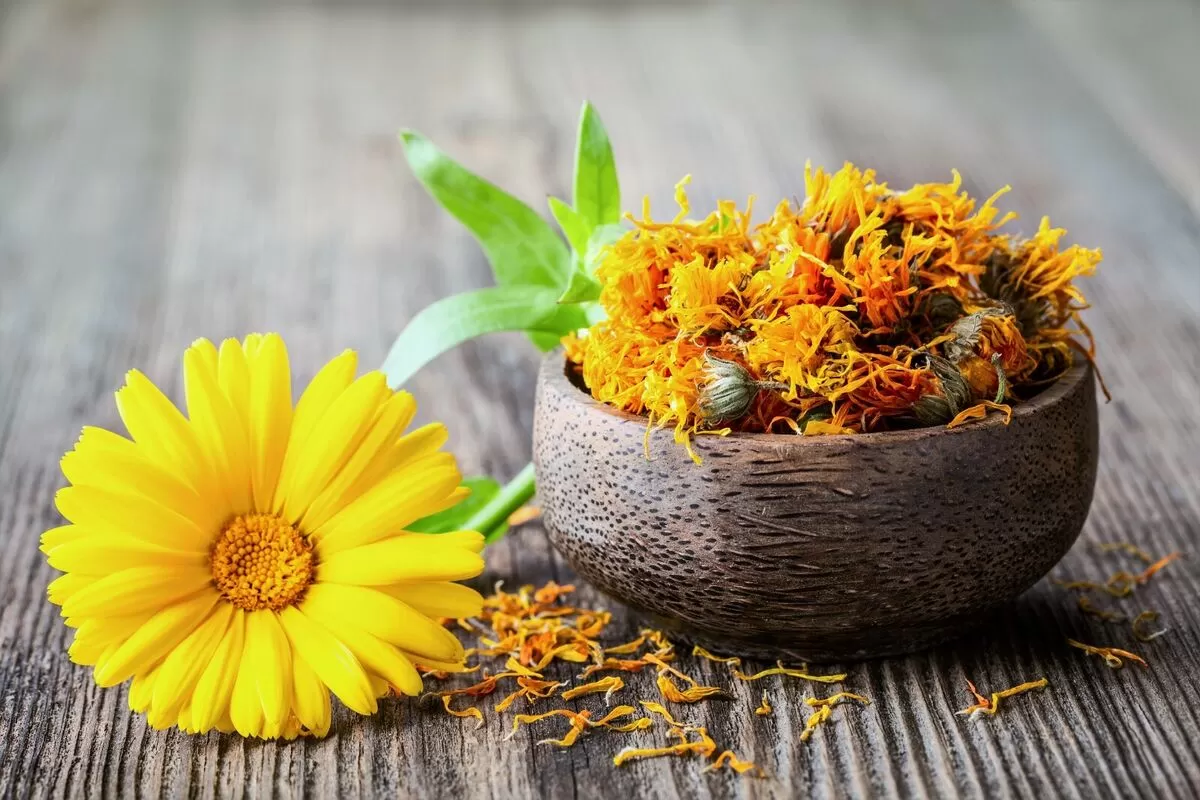- 0086-571-85302990
- sales@greenskybio.com
7 Benefits of Marigolds
2025-03-18
Marigolds (genus Tagetes) are among the most popular and widely cultivated flowers across the globe. Known for their vibrant hues of yellow, orange, and red, marigolds grace gardens, landscapes, and ceremonial displays with visual warmth and brightness. But far beyond their aesthetic appeal, marigolds provide a plethora of benefits that range from ecological contributions to agricultural advantages, medicinal properties, and cultural significance. This article delves into the many benefits of marigolds to showcase why they should be considered an essential addition to gardens, homes, and health regimens.
1. Ecological Benefits of Marigolds
Marigolds play a vital role in maintaining ecological balance. Here are some notable contributions:
Natural Pest Repellent
Marigolds are known for their ability to deter harmful pests, making them a valuable companion in gardens and farms. They exude chemicals such as thiophenes, which repel nematodes, aphids, and whiteflies. Some species, like French marigolds (Tagetes patula), are especially effective at reducing nematode infestation in soil. By planting marigolds alongside crops, gardeners can minimize the need for chemical pesticides, promoting an eco-friendly and sustainable approach to agriculture.
Pollinator Support
Marigolds attract beneficial insects, such as bees, butterflies, and hoverflies, which play essential roles in pollination. Their bright colors and nectar-rich blooms serve as magnets for these pollinators, ensuring healthy fertilization of nearby plants. By supporting pollinator populations, marigolds contribute not only to biodiversity but also to food production.
Soil Health Improver
Marigolds help maintain soil health by releasing compounds that suppress the growth of harmful fungi and bacteria. When marigold plants decompose, their organic matter enriches soil nutrients and promotes fertility, making them an ideal choice for crop rotation in agricultural fields.
2. Ornamental Value
One of the most obvious benefits of marigolds is their unparalleled beauty. Their fiery color palette adds vibrancy to landscapes, gardens, and flower beds, making them one of the most visually striking flowers. Here are some key attributes that contribute to their ornamental appeal:
Low-Maintenance Beauty
Marigolds are easy to cultivate and require minimal care, which makes them suitable for gardeners of all experience levels. They adapt well to various soil conditions, thrive in sunny locations, and can endure periods of drought. With their abundant blooms and prolonged flowering season, marigolds provide visual rewards with little effort.
Versatility in Landscaping
Whether planted as borders, fillers, or containers, marigolds are incredibly versatile landscaping plants. Their uniform growth pattern enhances garden symmetry, while their bold colors create focal points in a mixed planting arrangement. Being compact flowers, they can also brighten small spaces, patios, and balconies.
Year-Round Decor
In many regions, marigolds serve decorative purposes year-round due to their adaptability to different climates. In warmer zones, they continue blooming through several seasons, allowing homeowners to rely on their cheerful presence even in winter and autumn.
3. Cultural and Ceremonial Importance
Marigolds have rich cultural and ceremonial significance in different parts of the world, particularly in Asia, Africa, and Latin America. Their enduring symbolism transcends borders and interconnects spirituality, tradition, and art.
Symbol of Joy and Prosperity
Marigolds are associated with positivity and prosperity. In countries like India, they are integral to religious rituals, weddings, and festivals such as Diwali. Hindu worship practices often include marigolds as offerings to deities, symbolizing purity and devotion. Similarly, marigolds are widely used on Day of the Dead (Día de Los Muertos) in Mexican culture, where they are believed to guide spirits back to the material world with their vibrant petals and enchanting fragrance.
Artistic Inspiration
Marigolds inspire creativity in visual and performing arts. Their radiant colors have been replicated in artwork, textile designs, and floral arrangements for centuries. This enduring connection between marigolds and artistic expression is a testament to their cultural appeal.
4. Medicinal and Therapeutic Uses
Marigolds have long been valued for their medicinal properties, backed by both traditional herbal remedies and modern research. Here are some ways marigolds contribute to health and wellness:
Anti-Inflammatory and Antiseptic Properties
Marigolds contain powerful active compounds like flavonoids and carotenoids that battle inflammation and promote wound healing. Marigold Extracts or creams are often applied topically to soothe cuts, insect bites, burns, and other skin irritations. These antiseptic properties also reduce the risk of infection and improve recovery.
Skin Care Benefits
The marigold plant’s petals and oils are used in skincare due to their ability to hydrate, rejuvenate, and protect skin. Calendula oil, a derivative of marigold (specifically Calendula officinalis), is a popular ingredient in lotions, balms, and serums. Regular application can help reduce acne, eczema, and signs of aging while keeping the skin moisturized.
Promotes Digestive Health
Marigold tea or extracts have been used traditionally as a dietary supplement to improve digestion. The plant’s active ingredients soothe the lining of the stomach, reduce cramping, and alleviate symptoms of digestive ailments such as ulcers and gastritis.
Rich in Antioxidants
The carotenoids and flavonoids found in marigolds possess antioxidant properties that protect cells from oxidative damage. Consuming marigold-infused teas or extracts may aid in bolstering the immune system and reducing the risk of chronic conditions, including heart disease and cancer.
Mental Wellbeing
Marigold-scented oils or teas are known for their calming and stress-relieving effects. Aromatherapy practices often incorporate marigolds, as their fragrance helps to reduce anxiety and enhance relaxation. The cheerful blooms themselves also have psychological benefits, brightening moods and fostering positivity.
5. Culinary Uses
Although lesser-known, marigolds can also play a subtle yet impactful role in culinary endeavors. Edible marigold petals are commonly used to garnish dishes, infuse teas, or add flavor to salads and desserts. Their slightly peppery, citrusy taste can elevate culinary creativity while providing health benefits. In addition, Marigold Extracts are sometimes used as a natural food coloring to bring vibrant yellow or orange hues to sauces, drinks, and confectioneries.
6. Environmental and Economic Contributions
Marigolds not only enhance gardens and ecosystems but also serve broader environmental and economic purposes. Their cultivation benefits individuals and communities in several ways:
Sustainable Landscaping
Marigolds can aid in erosion control and environmental restoration projects due to their compact growth pattern and adaptability to harsh conditions. They require little water or fertilization, making them viable choices for low-maintenance, sustainable landscapes.
Cash Crop Potential
In many regions, marigolds are grown as cash crops due to their high demand in floriculture and essential oil industries. They are commonly harvested for producing marigold oil, dyes, and cosmetic products, providing economic opportunities for farmers and businesses.
7. Education and Social Engagement
Marigolds are common fixtures in gardening programs and community green spaces due to their educational and social significance. Their easy cultivation makes them ideal for children’s gardening activities, teaching future generations about plant care, ecology, and agriculture. Similarly, marigolds are often used in community beautification initiatives, encouraging people to connect with nature and enhance shared spaces.
Conclusion
Marigolds are far more than just beautiful flowers. Their versatility makes them an invaluable addition to gardens, farms, healthcare practices, and cultural traditions. Whether you are looking to brighten your outdoor spaces, protect crops, improve skin health, or honor a cultural ritual, marigolds are a smart and rewarding choice. Their ecological contributions, medicinal properties, decorative value, and economic potential make them one of nature’s most remarkable gifts. As humanity seeks a greater connection with the environment and sustainable practices, marigolds serve as a humble yet powerful reminder of nature’s ability to enrich our lives on every level. It is no wonder that marigolds continue to bloom not only in soil but also in the hearts of generations to come.
-
Is Marigold Good for Eczema?
2025-03-18
-
Can we apply marigold on face?
2025-03-18
-
What are marigolds used for?
2025-03-18
-
Is marigold good for inflammation?
2025-03-18
-
Are marigolds safe for human consumption?
2025-03-18















